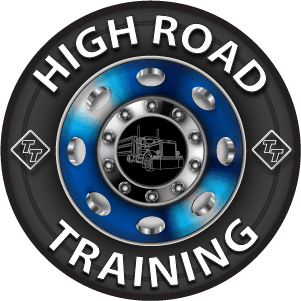Note: Your are not logged in. We can not keep your scores or track your progress unless you Register and Log In
10.7 – Special Safety Considerations
10.7.1 – Strobe Lights
Some school buses are equipped with roof-mounted, white strobe lights. If your bus is so equipped, the overhead strobe light should be used when you have limited visibility (that is, if you cannot easily see around you — in front, behind, or beside the school bus). Your visibility could be only slightly limited or it could be so bad that you can see nothing at all. In all instances, understand and obey your state or local regulations concerning the use of these lights.
10.7.2 – Driving in High Winds
Strong winds affect the handling of the school bus. The side of a school bus acts like a sail on a sailboat. Strong winds can push the school bus sideways. They can even move the school bus off the road or, in extreme conditions, tip it over.
If you are caught in strong winds:
- Keep a strong grip on the steering wheel. Try to anticipate gusts.
- You should slow down to lessen the effect of the wind or pull off the roadway and wait.
- Contact your dispatcher to get more information on how to proceed.
10.7.3 – Backing
Backing a school bus is strongly discouraged. You should back your bus only when you have no other safe way to move the vehicle. You should never back a school bus when students are outside of the bus. Backing is dangerous and increases your risk of a collision. If you have no choice and you must back your bus, follow these procedures:
- Post a lookout. The purpose of the lookout is to warn you about obstacles, approaching persons and other vehicles. The lookout should not give directions on how to back bus.
- Signal for quiet on the bus.
- Constantly check all mirrors and rear windows.
- Back slowly and smoothly.
- If no lookout is available:
- Set the parking brake.
- Turn off the motor and take the keys with you.
- Walk to the rear of the bus to determine if the way is clear.
- If you must back up at a student pickup point, be sure to pick up students before backing and watch for late comers at all times.
- Be sure that all students are in the bus before backing.
- If you must back up at a student drop-off point, be sure to unload students after backing.
10.7.4 – Tail Swing
A school bus can have up to a 3-foot tail swing. You need to check your mirrors before and during any turning movements to monitor the tail swing.
Multiple-Choice Questions:
Some school buses are equipped with roof-mounted, white strobe lights. If your bus is so equipped, the overhead strobe light should be used when:
- You are waiting for children to cross the street
- You have a problem with your ABS system
- You have limited visibility
- You are in a construction zone or crossing railroad tracks
If you are caught in strong winds in a school bus you should:
- All these are correct
- Keep a strong grip on the steering wheel. Try to anticipate gusts.
- You should slow down to lessen the effect of the wind or pull off the roadway and wait.
- Contact your dispatcher to get more information on how to proceed.
If you are caught in strong winds:
- Keep a strong grip on the steering wheel. Try to anticipate gusts.
- You should slow down to lessen the effect of the wind or pull off the roadway and wait.
- Contact your dispatcher to get more information on how to proceed.
Which of the following are NOT true about backing a school bus?
- Never post a lookout at the back of the bus to watch for people or obstacles
- If you must back up at a student drop-off point, be sure to unload students after backing.
- Be sure that all students are in the bus before backing.
- If you must back up at a student pickup point, be sure to pick up students before backing and watch for late comers at all times.
- Post a lookout. The purpose of the lookout is to warn you about obstacles, approaching persons and other vehicles. The lookout should not give directions on how to back bus.
- Signal for quiet on the bus.
- Constantly check all mirrors and rear windows.
- Back slowly and smoothly.
- If no lookout is available:
- Set the parking brake.
- Turn off the motor and take the keys with you.
- Walk to the rear of the bus to determine if the way is clear.
- If you must back up at a student pickup point, be sure to pick up students before backing and watch for late comers at all times.
- Be sure that all students are in the bus before backing.
- If you must back up at a student drop-off point, be sure to unload students after backing.
Which of the following are true about backing a school bus?
- Backing a school bus is strongly discouraged
- All these are true
- You should back your bus only when you have no other safe way to move the vehicle.
- You should never back a school bus when students are outside of the bus
Complete!
You can Return To The Table Of Contents







 TT On Facebook
TT On Facebook